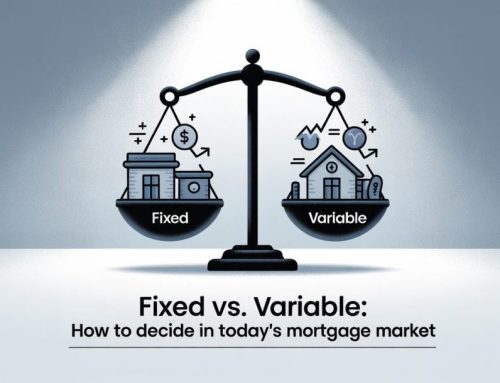The first quarter of 2020 was a roller coaster for mortgage rates. In February, they were falling faster than anyone could keep up. This made it difficult for industry professionals and mortgage rate shoppers alike. How do you know you’re getting the lowest rate when your quotes are out of date potentially within hours?
In mid-March, this trend abruptly reversed like a speeding fastball meeting the perfect swing of a bat. It was when the world began to realize the severity of the COVID-19 pandemic. The Bank of Canada unexpectedly slashed their overnight rate by 0.50% in a single move. This sent bond yields soaring, which placed immediate upward pressure on fixed mortgage rates, and caused the abrupt reduction of discounts on variable rate mortgages. It was unprecedented to see prime rate and fixed mortgage rates moving in opposite directions by such a large margin.
Fixed mortgage rates continued to rise as mortgage lenders were facing a liquidity crisis. This is another way of saying that the funds available to be lent for mortgages were drying up. As with all industries, a limited supply will drive up the cost, or in this case, the rate. The Bank of Canada had to intervene by introducing three stimulus packages, which very quickly assuaged all liquidity concerns. This is the move that began the precipitous decline of mortgage rates that has continued to this day.
The Bank Of Canada Eliminates Additional Mortgage Stimulus
They BOC announced last week that they will be ending two stimulus programs, and cutting back on the third. Liquidity has now reached 10 x the pre-covid numbers, which obliterates any concerns. With so much mortgage funding available, there is simply no more need for these programs at this time.
As of October 26th, the BOC will be closing out their Canada Mortgage Bond Purchase Program, as well as the Bankers Acceptance Purchase Facility. They will be cutting back on their Term Repo Operations program, converting it from weekly to biweekly commencing October 21st (Today). These programs were all introduced for the same purpose. To improve mortgage liquidity and to keep mortgage rates from skyrocketing out of control.
When these stimulus packages were introduced back in March, everyone was in panic mode, which can lead to overcompensation. Remember when everyone was stocking up on toilet paper as though it was going to be their saviour through the crisis?
Case and point.
The BOC has pumped so much money into mortgage stimulus that there is now an excessive supply of funding, which will contribute to keeping mortgage rates low. While bond yields have been slowly increasing since the announcement, it hasn’t been anything too radical, and not enough to move the needle. This is something that we’ll be watching closely however.
What Can We Expect From Mortgage Rates Going Forward
There has been some concern that the Bank of Canada’s decision to end these programs will result in rising mortgage rates, however I would not expect to see any significant increases anytime soon. Fixed or variable. With the second wave of COVID coming through, there is much uncertainty around our economy. It’s going to take years before we fully recover, so I’d expect to see mortgage rates remain relatively low for years to come.
In my July 1st blog, I put the word out the Universe that I’d like to see fixed mortgage rates as low as 1.50% (5 year fixed insured rates were 1.99% at that time). In my July 17th blog, I mentioned that insured rates were trending downward and would be closer to 1.50% within months. Here we are three months later, and the lowest 5 year fixed available on an insured mortgage is 1.49%.
Is it possible that mortgage rates could drop even further?
There is still a possibility that they could go a little lower before the end of the year, but I wouldn’t count on anything too major, if anything at all. As long as there is a large surplus of available funds to mortgage lenders, and there is economic uncertainty, rates will remain low. Of course, anything can happen and all we can do is speculate based on what we know today.








Thanks for sharing. I read many of your blog posts, cool, your blog is very good.
Thanks for the kind words. Glad to see the blogs are helpful.